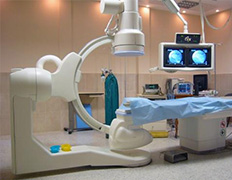Anal Abscess
An anal abscess is a painful condition in which a collection of pus develops near the anus. Most anal abscesses are a result of infection from small anal glands.
The most common type of abscess is a perianal abscess. This often appears as a painful boil-like swelling near the anus. It may be red in color and warm to the touch. Anal abscesses located in deeper tissue are less common and may be less visible.
Surgical incision and drainage is the most common treatment for all types of anal abscesses and is usually successful. After an abscess has been drained, however, about 50% of patients will develop a complication called a fistula. A fistula is a small tunnel that makes an abnormal connection between the site of the abscess and the skin.
In some cases, an anal fistula causes persistent drainage. In other cases, where the outside of the tunnel opening closes, the result may be recurrent anal abscesses. Surgery is needed to cure almost all anal fistulas.
Causes of Anal Abscesses
An anal abscess can have many different causes. These include:
• Infection of an anal fissure. An anal fissure is a small superficial tear in the skin of the anal canal.
• Sexually transmitted infections.
• Blocked anal glands.
Risk factors for anal abscesses include:
• Colitis
• Inflammatory bowel disease such as Crohn’s disease or ulcerative colitis
• Diabetes
• Diverticulitis
• Pelvic inflammatory disease
• Being the receptive partner in anal sex
• Use of medications such as prednisone
For adults, using condoms during sexual intercourse, including anal intercourse, can help prevent anal abscesses. For infants and toddlers, frequent diaper changes and proper cleaning during diaper changes can help prevent anal fissures and perianal abscesses.
Symptoms of Anal Abscesses
Superficial anal abscesses are often associated with:
• Pain, which is usually constant, throbbing, and worse when sitting down
• Skin irritation around the anus, including swelling, redness, and tenderness
• Discharge of pus
• Constipation or pain associated with bowel movements
Deeper anal abscesses may also be associated with:
• Fever
• Chills
• Malaise
Sometimes, fever is the only symptom of deep anal abscesses.
Diagnosis of Anal Abscesses
Usually, a clinical evaluation — including a digital rectal exam — is sufficient to diagnose an anal abscess. But some patients may require additional tests to screen for:
• Sexually transmitted infections
• inflammatory bowel disease
• Diverticular disease
• Rectal cancer
In rare cases, an examination may be done under anesthesia. The doctor may also ask for an ultrasound, a CT scan, or an MRI.
Treatment of Anal Abscesses
Prompt surgical drainage is important, preferably before the abscess erupts. Superficial anal abscesses can be drained in a doctor’s office using a local anesthetic. Large or deeper anal abscesses may require hospitalization and the assistance of an anesthesiologist.
After the procedure, most people are prescribed medications for pain relief. For otherwise healthy people, antibiotics are usually not needed. Antibiotics may be required, though, for some people, including those with diabetes or decreased immunity.
Our Expertise in Medical Services
Rana Hospital was started with a dream of providing the best facilities for Piles, Fissures, Fistula and all Anorectal problems.

Mon to Sat:
8:30 AM – 1:30 PM
4:00 PM – 6:30 PM
Mon to Sat:
9:00 AM – 1:30 PM
4:00 PM – 6:30 PM
Make an Appointment
 Accreditation & Awards
Accreditation & Awards
The Hospital organized a free checkup camp for PILES on 24th October 2013 in which 717 patients from all over India were examined. It was followed by one day free operation camp on 27th October 2013. Dr Suri single-handedly performed 391 free surgeries in 8 hours & 45 minutes setting a World Record. The World Record was acknowledged by Limca Book Of Records and Unique World Records.





